LAND YOU A JOB or LAND IN HR TRASH BIN?
– A Wise Man
Welcome to part one of our three-part series, “Complete Guide to Mastering the Japanese Style Resume.”
In this series, we’ll cover the three main types of Japanese resumes:
- 履歴書 (Rirekisho):
- A general overview of your career and basic information.
- 技術経歴書 (Gijutsu Keirekisho):
- A detailed document about your work experience, skills, and projects, especially for engineers.
- 職務経歴書 (Shokumu Keirekisho)
- A detailed document about your work experience, skills, and projects, geared towards business professionals.
In this first part, we’ll focus on how to correctly fill out the general resume, 履歴書 (Rirekisho). Let’s get started!
If you have already created a 履歴書, you can check out part-2, 技術経歴書:
https://jellyfish-g.co.jp/techport_japan/mastering-the-japanese-style-resume-complete-guide-for-the-japanese-job-market-part-2-gijutsu-keirekisho-技術経歴書/
Why Do We Need the 履歴書 (Rirekisho)?
Japanese employers value organization and having a clear overview of an applicant’s background. The 履歴書 (Rirekisho) is an excellent tool that provides a snapshot of your life, experiences, and ability to evaluate if you can stay organized and detail-oriented.
By meticulously completing each section of the 履歴書, you demonstrate your professionalism and showcase your strengths and qualifications in a well-structured manner.
This document is essential for making a positive impression and setting yourself apart as a capable and organized candidate.
Section 1: Personal Information (個人情報)
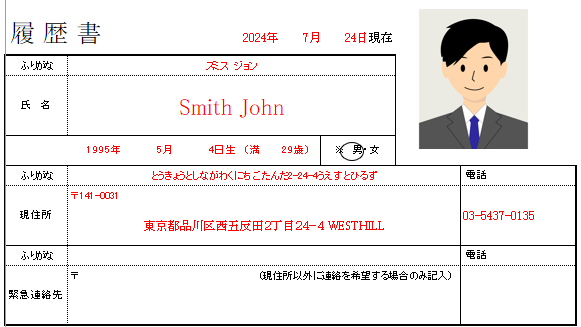
- Name (名前):
-
Write your full name according to your Passport in Roman Letters or Kanji (if applicable), and Furigana (phonetic reading).
- Portrait Picture (証明写真):
-
Ensure that you are dressed formally, use a plain, light-colored background to keep the focus on you, and it should be taken within 3–6 months
- Date of Birth (生年月日):
-
Include your birthdate in the format YYYY/MM/DD and your age.
- Address (住所):
-
Write your full address, including postal code.
- Emergency Contact (緊急連絡先) – IF APPLICABLE:
-
Who to Include: Typically, this should be a close family member or a trusted friend who resides in Japan.
If you don’t have any close contacts in Japan, you may include a family member from your home country. -
Information to Provide:
・Name (氏名): Full name of the emergency contact.
・Relationship (続柄): Your relationship to the contact (e.g., parent, spouse, friend).
・Phone Number (電話番号): A reachable phone number.
・Address (住所): The contact’s full address.
Section 2: Educational Background (学歴) & Work Experience (職歴)
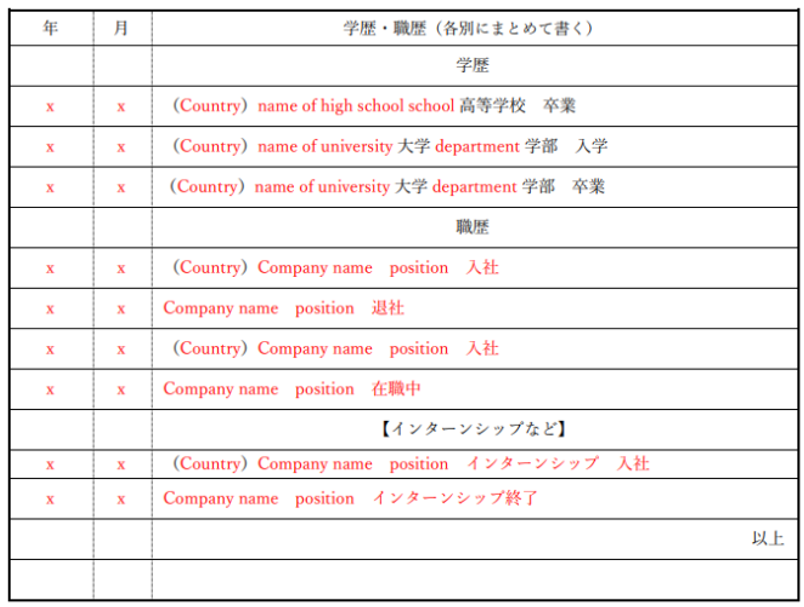
- Educational Background (学歴):
-
・List your educational history starting from high school, including the country, names of institutions, department, and dates of entry and exit.
・Ensure the information is in chronological order, starting from the earliest to the most recent. - Work Experience (職歴)
-
・Similar to the educational background, list your work experience in chronological order.
・Include the company name, position, entry and exit dates and if it was a full-time or part-time position.
・Include a separate section titled インターンシップおよびフリーランス (Internships and Freelancing) to detail the company/client name, position, duration.
Section 3: Qualifications and Licenses (免許・資格)
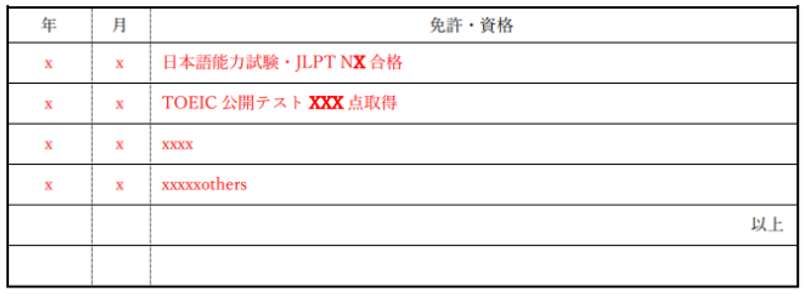
- List any relevant qualifications, certifications, and licenses you have obtained that are related to the job.
- Include the dates you received these credentials.
Section 4: Skills and Hobbies (特技・趣味) and Additional Information (その他)

- Highlight any special skills or hobbies that may be relevant to the job you are applying for
-
Examples:
・Engineering jobs ← Reading/Build Computer/Create trivial tools/Podcast
・Sales ← Hangout with friends/Reading/News/Write Diaries - Commute Time (通勤時間)
-
・Estimate the time it will take you to commute from your home to the workplace.
・If you are living overseas, you can leave this item empty - Dependents (扶養家族数)
-
Indicate the number of dependents you have, if any.
Section 5: Motivation for Application and Aspirations (志望動機・自己PR)
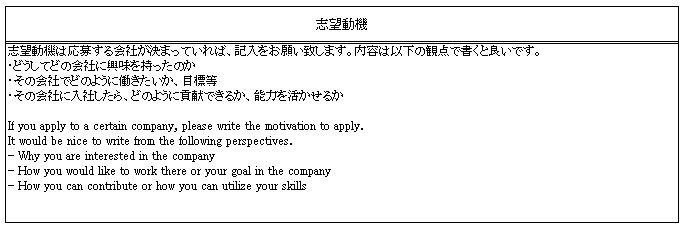
-
- Explain why you are seeking this specific type of position and how your skills and experience can contribute to society by joining the company.
- Discuss your career goals and how this job aligns with your original motivation for becoming what you are today.
- Be sincere and specific, aligning your motivation with the company’s mission and vision to make a strong impression.
Stay tuned for the next part of our series, part 2, where we’ll explore the 技術経歴書 (Gijutsu Keirekisho) in detail.
Good Luck, and Happy Job Hunting!

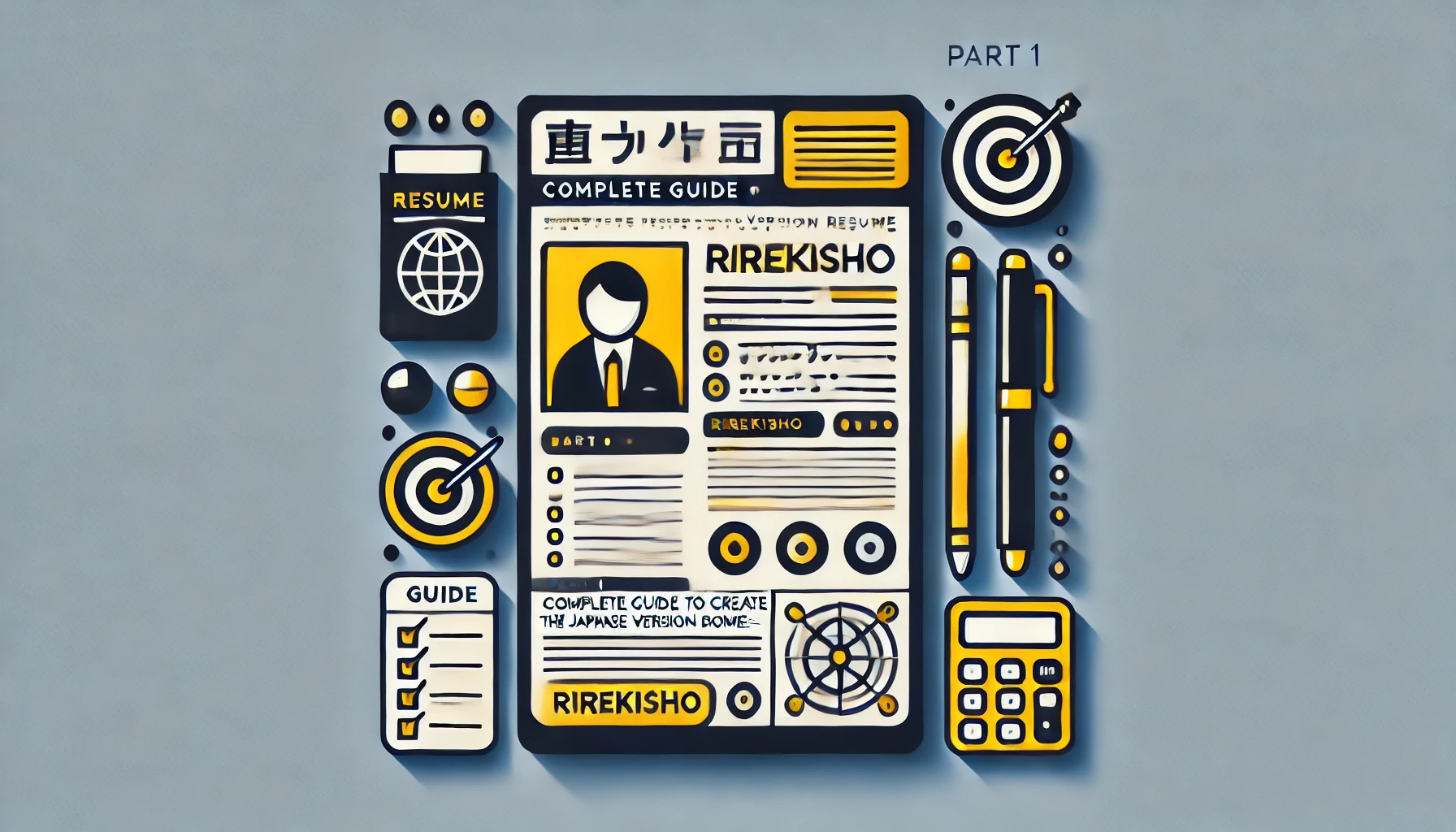

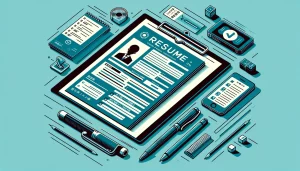




What do you think? Leave Us a Comment!